
Garden pathways solve multiple tasks – they make walking and transporting mechanized equipment simpler, divide the space into zones, and decorate it. In most cases, you can pave them yourself; all you have to do is choose the necessary material. We suggest familiarizing yourself with the main methods of creating enhanced paths for a private yard!
1. Concrete Slabs
Durable and reliable concrete is an excellent resource for organizing garden paths. The concrete option is easy to clean, it’s economical, resistant to temperature changes, and durable. Ready-made slabs look quite good, moreover, they can be made in almost any size and configuration. There is also the opportunity to change the shade of the coating by adding the necessary amount of dyes. Building such paths yourself is no problem.
Start by marking the boundaries and digging a bed 3.9 inches (10 cm) deep. Fill it with a layer of sand 2 inches (5 cm) deep, tamp it down and water it. Then install wooden frames in the bed at a distance of 2.8 inches (7 cm) from each other. The width of the frames should be directly proportional to the width of the path itself. Fill the frames with a concrete solution.
After 3 days, the concrete slabs will harden. Now all that remains is to plant grass between the slabs or fill the gaps with gravel.
The surfaces look beautiful and appropriate on plots decorated in modern, Scandinavian styles. The strict and somewhat cold image combines with glass, plastic, stone, metal.

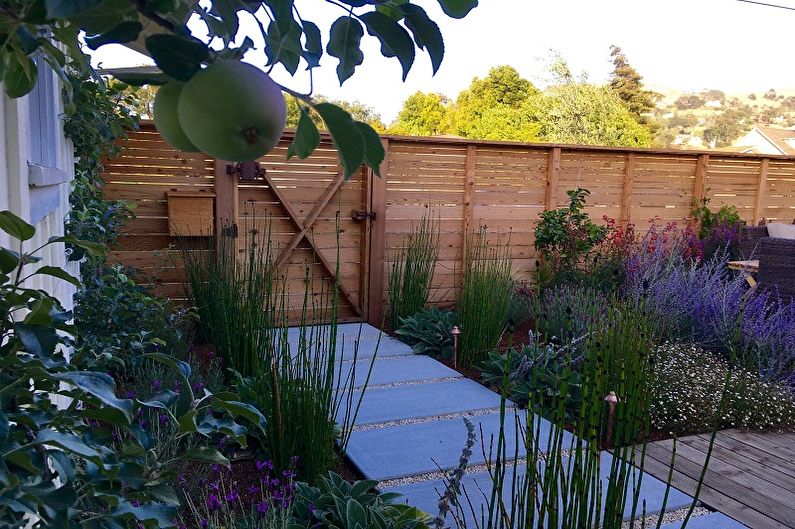
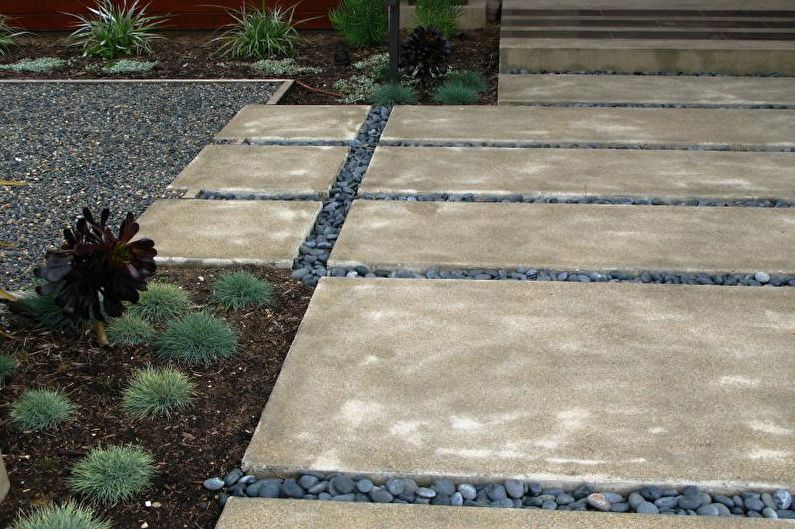
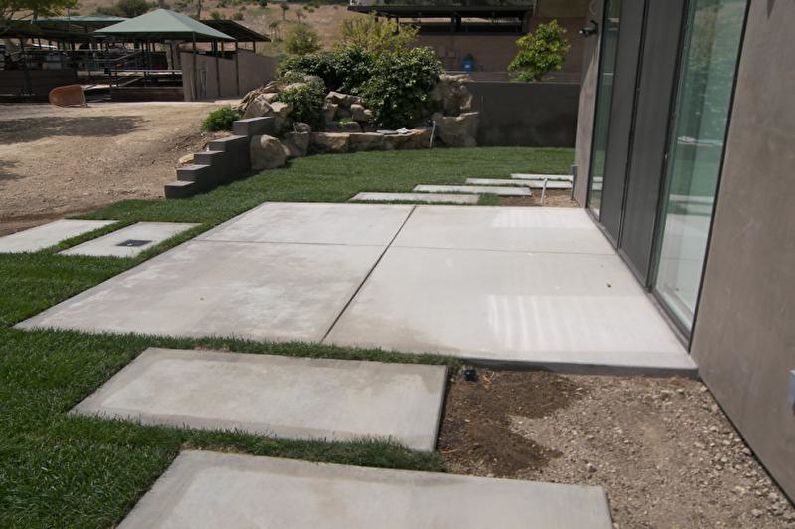
2. Planks
Wood is perfect for landscaping in any of its manifestations. Wood is a warm natural material that does not overheat in hot weather, so it is pleasant to walk on it even without shoes. Thus, if you are a fan of natural raw materials, feel free to use wood to create a garden path.
During the design process, you should pay separate attention to the relief. Irrigation places, deep depressions where liquid can accumulate, are not the best for lumber. From a technological point of view, you should place them above the ground line so they remain dry and clean. Make a unique cushion by laying a frame in the trench, to which you will subsequently attach the boards with screws.
To harmoniously fit the wooden path into the overall landscape, its dimensions should be proportional to the place of location. For example, a small area in the garden does not require wide lines, limit yourself to 19.7 inches (50 cm) for one person. Central passages, on the contrary, should have spacious routes measuring 3.3 feet (1 meter) or more.
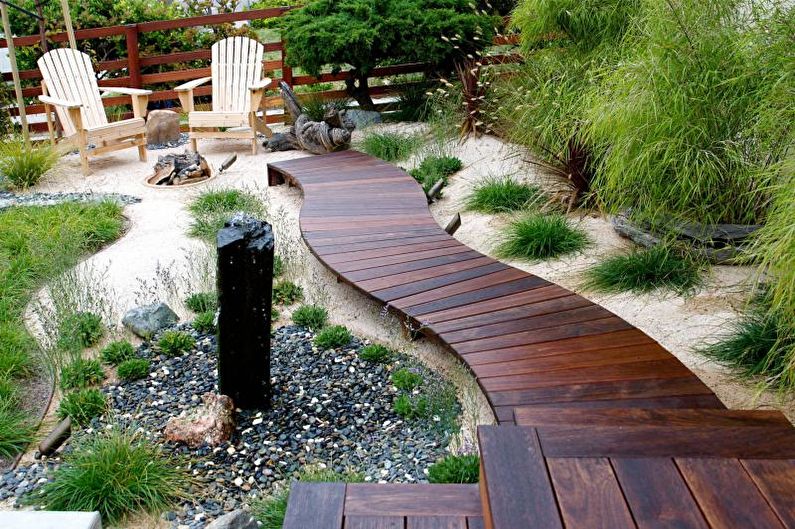
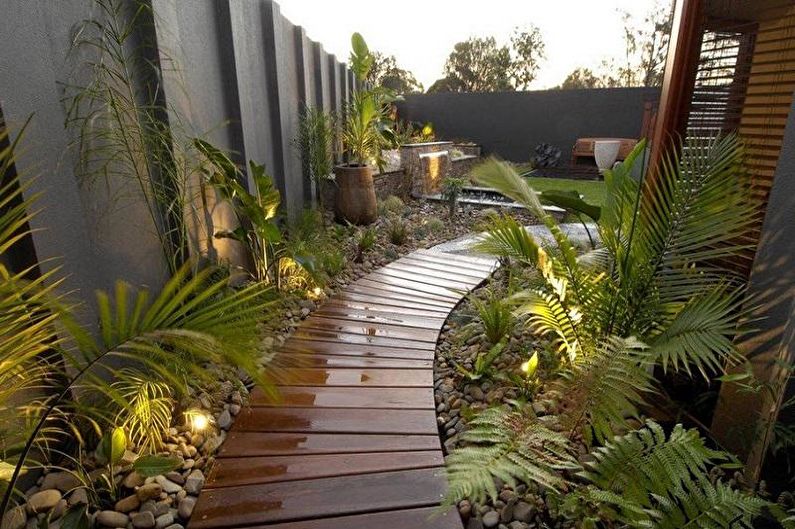
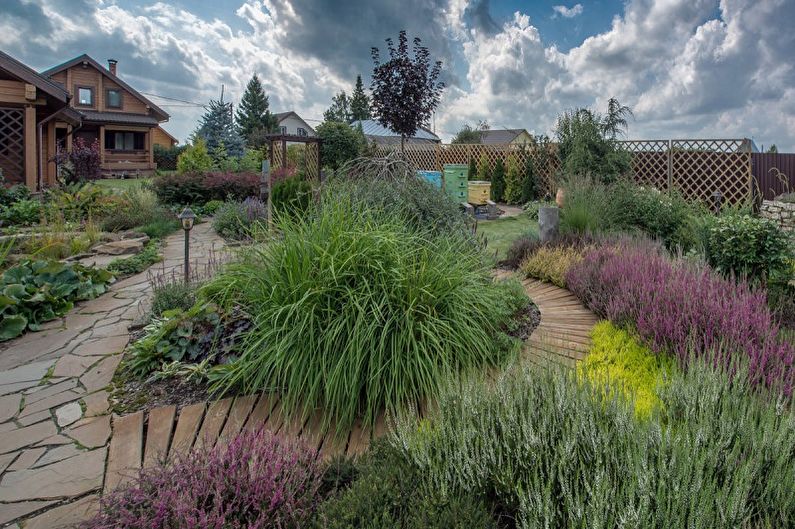
3. Wooden Stumps
Garden paths made of tree stumps look non-trivial. These eco-friendly products have a natural look, are low-cost, don’t form puddles, can be repaired, and over time, unusable logs can be crushed and included in compost. But the most significant plus is that you can quickly and easily construct a unique path yourself.
To start, mark the route and delineate it with stakes and strings stretched between them. Dig a trench that should be about 2.3-2.6 feet (70-80 cm) deeper than the height of the stumps. Place a polyethylene film at the bottom. Then pour gravel or crushed stone half of the total height, compact it well. Fill the remaining space with sand and water it for compaction.
Next, the logs are laid out. Lay the logs as you like, you can alternate large and small stumps, place them close or far from each other. The most important thing at this stage is to secure them well and level them with a construction level.
At the end, fill the spaces between the disks with soil with grass seeds, sand, or gravel. Treat the wooden parts with an antiseptic, paint, or linseed oil.
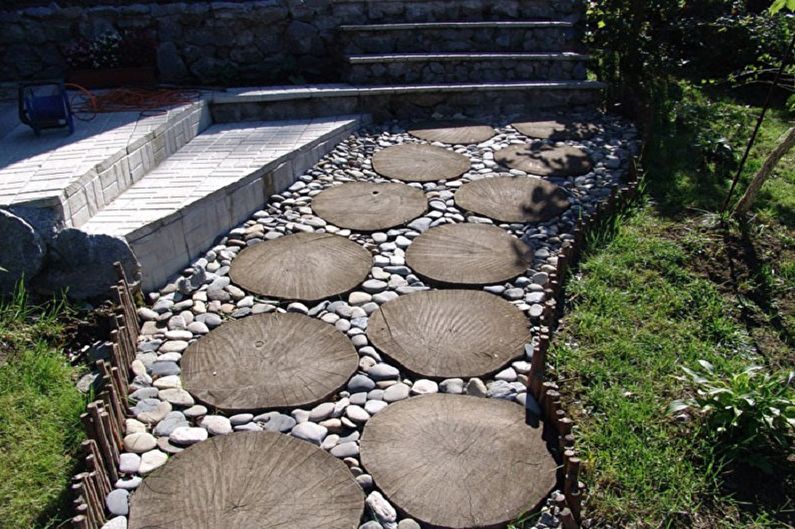

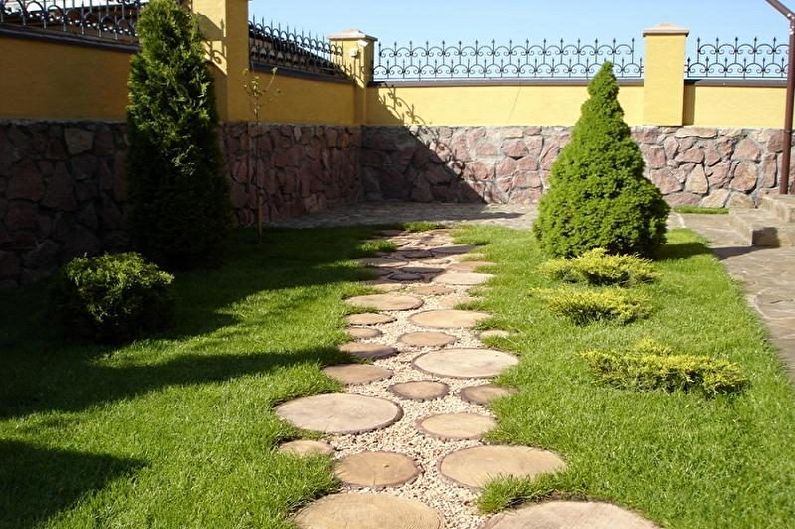
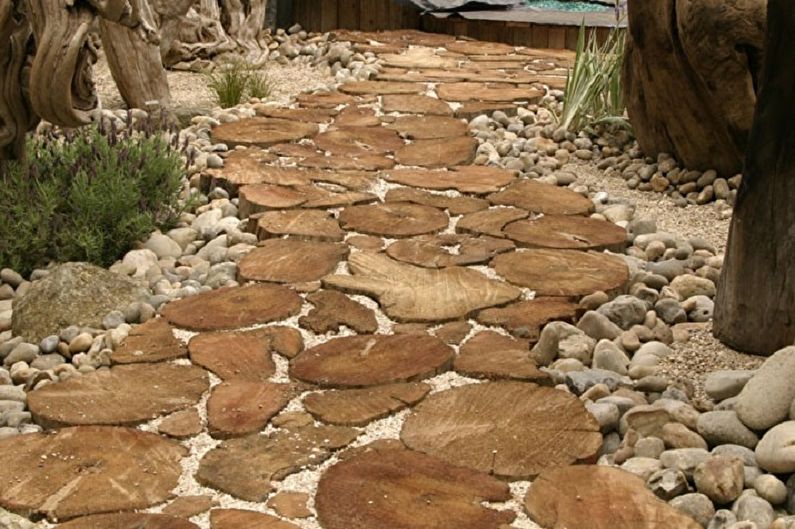
4. Figurative Forms
Using figurative forms is a simple and inexpensive way to arrange a garden path. For the full cycle of DIY construction, one device is enough. Naturally, the plates are not as strong as factory products produced with vibrocasting technology, but for landscape paths with their low load, this is a quite optimal option.
You can buy the frame in a specialized store, on an Internet resource, or make it yourself from foam or chipboard. The concrete mixture should be relatively thick. Place the frame on the ground, fill it with concrete, distribute it with a spatula and wait 10-15 minutes until the liquid solidifies. Remove the form with gentle vibration. Repeat the cycle throughout the planned area. At the end, sprinkle the blocks with sand, water, and sweep with a stiff brush.
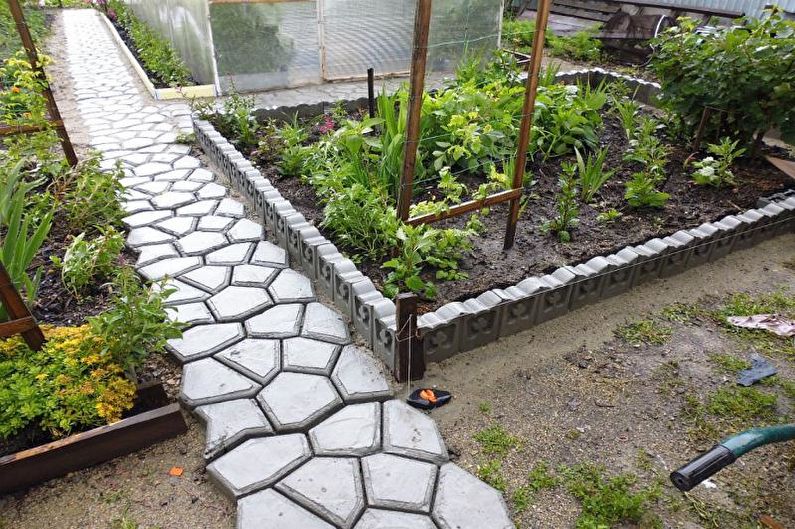
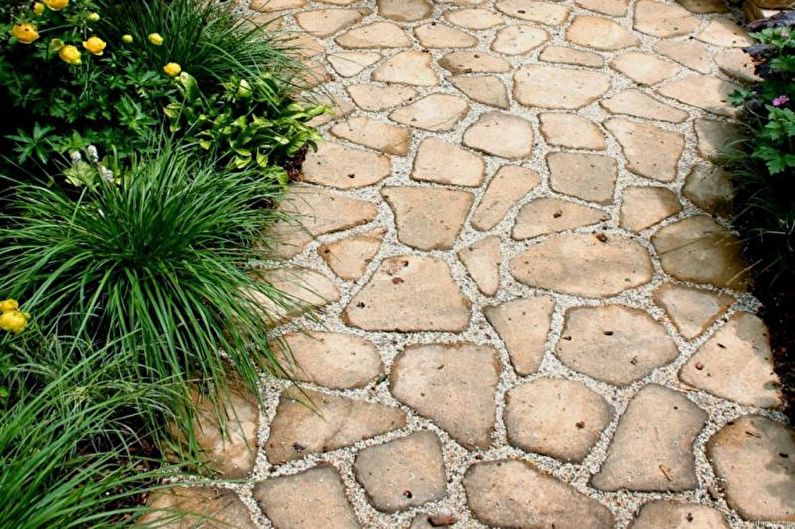
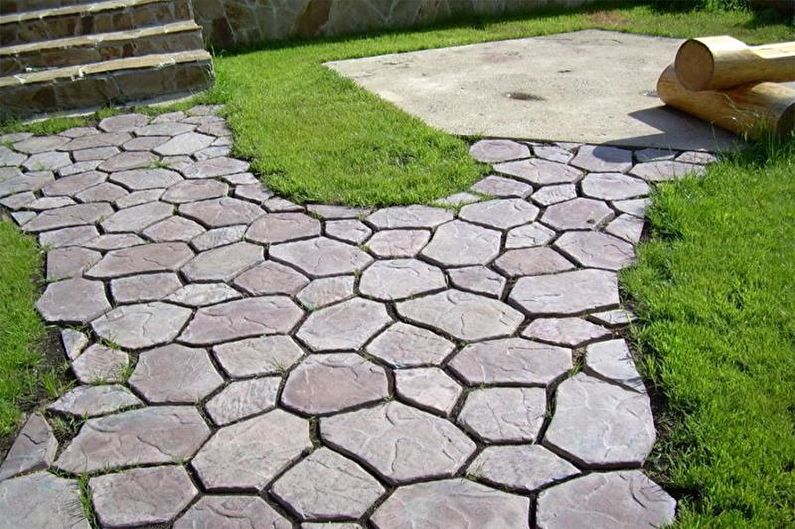
5. Natural Stone
For many designers, this material seems to be one of the best in terms of its practical and aesthetic characteristics. Indeed, bushes, trees, flowers, and lawns look very natural in its environment. The advisability of using this product may only cause doubts due to its high cost and processing difficulties.
The stone is beautiful in its natural state, so it’s better to leave it in its original form, otherwise, you risk getting an artificial unremarkable result instead of a noble image. Products made from basalt, granite, marble, and limestone slabs are particularly popular.
There are two main methods of paving – with or without adding cement. In either case, make up your mind before starting work. When laying the final cover, make sure the surface is a few inches (from a few centimeters) above the ground level. It’s important to pay attention to this to prevent liquid from accumulating on the finished path.
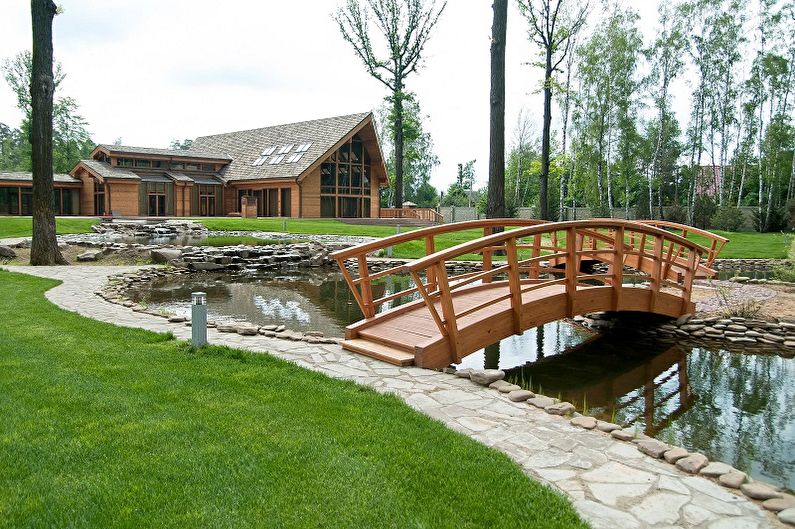
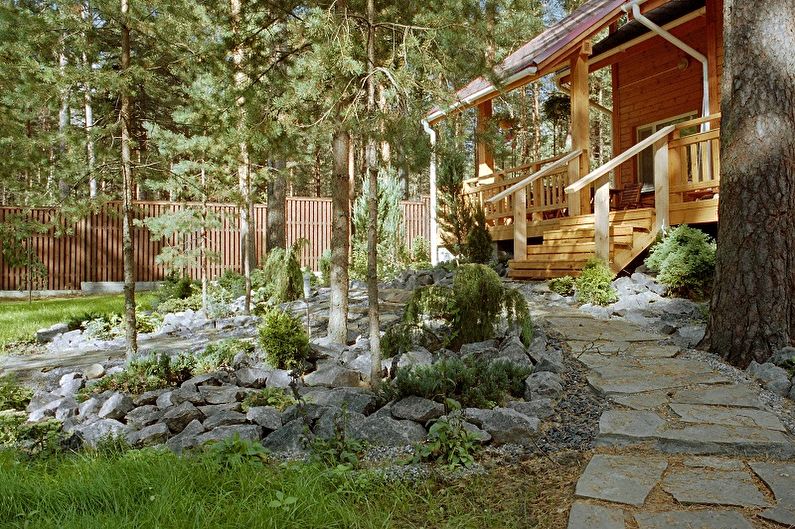
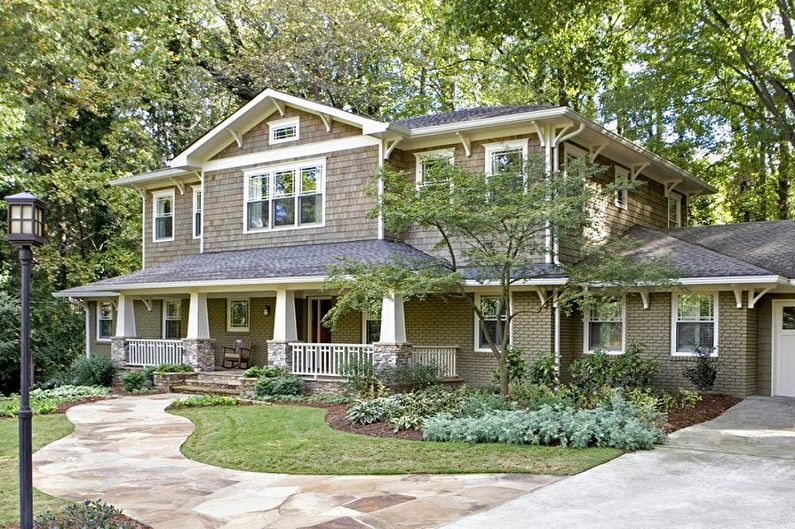

6. Clinker Paving Stones
Paved walkways withstand weather conditions, mechanical impacts, and wear and tear. An attractive appearance and pleasing color palette, along with affordable prices, make this material quite competitive in the construction market. The product is easy to lay and use, acids, salts, and oils don’t damage it, and its shade remains the same for many years.
You can highlight the following main groups of shades: brick, yellow, dark, and light – choose the right color in tone with the rest of the buildings. The texture of the product is also an important factor. Choose a smooth, rough, or decorative one with shiny elements. But be careful, even the texture should resonate with the facade.
You can construct a garden path from paving stones without professional help. Remove the top layer of soil to 12-20 inches (from 30-50 cm). For footpaths, a sandy base is enough. It is poured to a depth of 4-8 inches (from 10-20 cm), watered, and compacted. Then make a small indentation and install the border 0.08-0.16 inches (from 2-4 mm) below the paving stones. Choose a method of laying and start the laying process, leaving small gaps of 0.12-0.2 inches (from 3-5 mm). Finally, fill the gaps with sand, distribute it with a brush, compact it with a vibrating plate, and wash the surface with water.
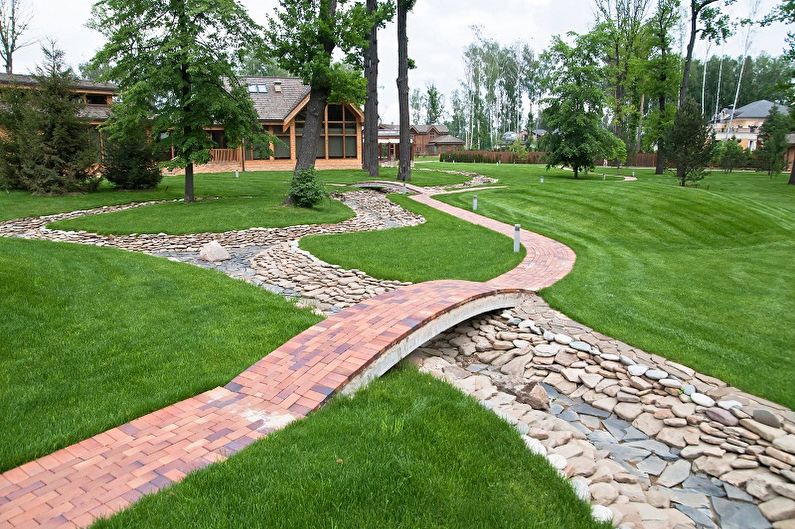
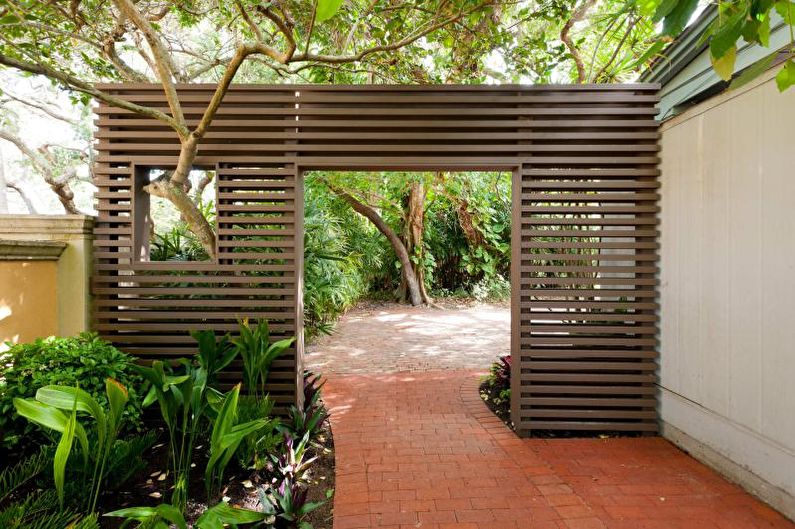

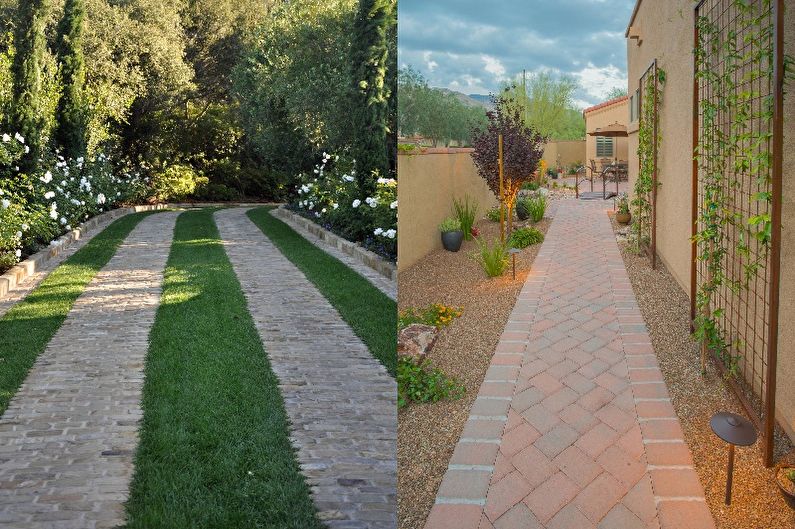
7. Loose Path
Landscape design professionals have long used pebbles, gravel, and crushed stone in their work. Areas in the company of these stones look beautiful and unforced. At the same time, paths calmly respond to manageable loads in the form of cart transport and walking. Definitely consider loose variations if your house is decorated in a rural or Mediterranean style. A country garden is organically complemented by paths made of fragments of rock, laid out in a solid canvas, without excessive gloss. In the second case, you can get a bit fancy and lay out a mosaic pattern from pebbles. Moreover, an alpine hill, beautiful flower beds, or a small pond go well with this design element.
If you wish, you can build a garden path from pebbles with your own hands. Define the contours with a rope, considering that their width should be at least 20 inches (from 50 cm). Remove a layer of soil to 6-8 inches (from 15-20 cm), pour in sand, and then gravel. Fill the trench two-thirds of the way. Place the border along the edges and pour the remaining space with cement, controlling the horizontal orientation with a level. Lay the pebbles on the wet mortar. For laying stones without a pattern, place them vertically or horizontally close to each other, pressing into the cement. If you want to create a path with a pattern, create a sketch and start outlining it from the center. To achieve a flat surface, use a board and hammer, tapping each section, and check the result with a level. Cover the work with a film, leave it for a day, then pour the path with liquid cement, and remove the excess with a brush. You can use the path for its intended purpose after 15 days.
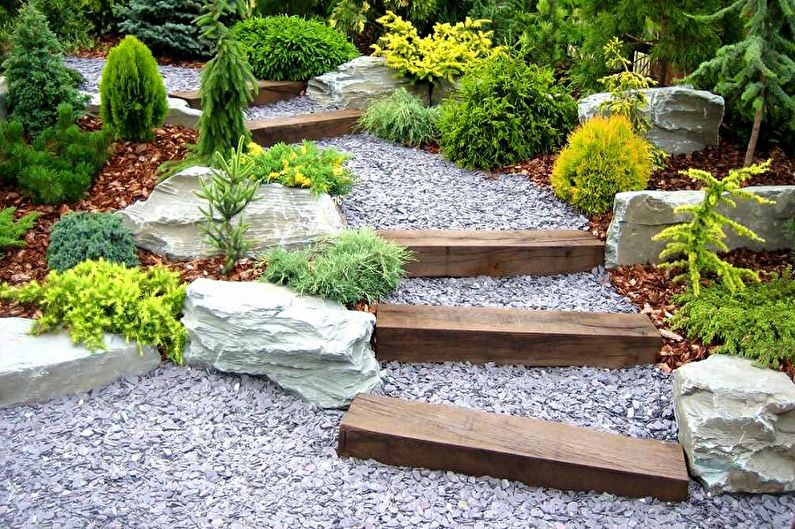
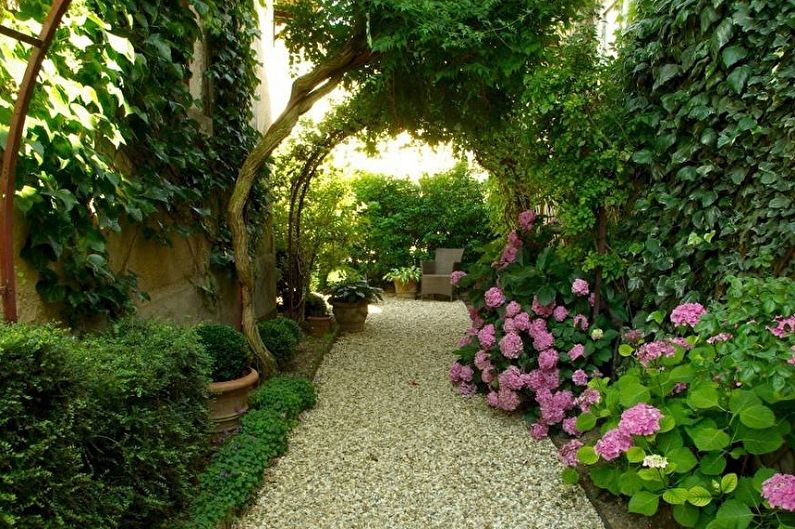
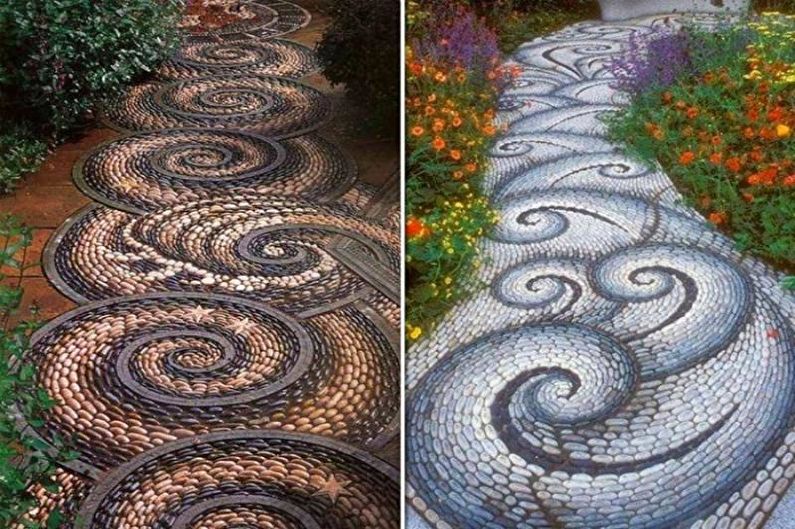
8. Garden Decking
Garden decking is a relatively new covering for landscaped areas. Typically, it is a solid or modular platform made of wood or WPC (Wood Plastic Composite). It has already proven itself to be an aesthetic, convenient, and safe resource. When choosing decking made of natural wood, prefer oak species, as they are less susceptible to rot and wear than, for example, coniferous species.
The concise configuration is arguably the main advantage of the material. If you have a solid foundation with drainage, you can lay the canvas directly on the ground. But if the surface has bends and you plan to improve a large space, it makes sense to prepare a foundation like a sand or sand-gravel pad.
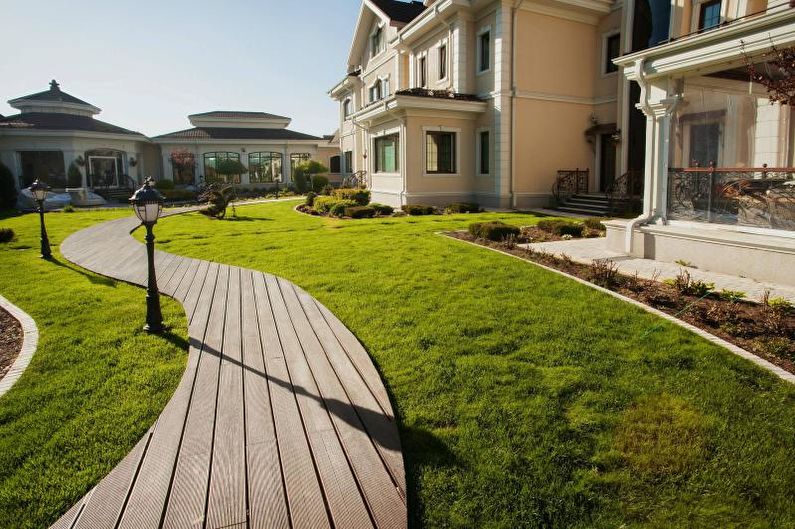
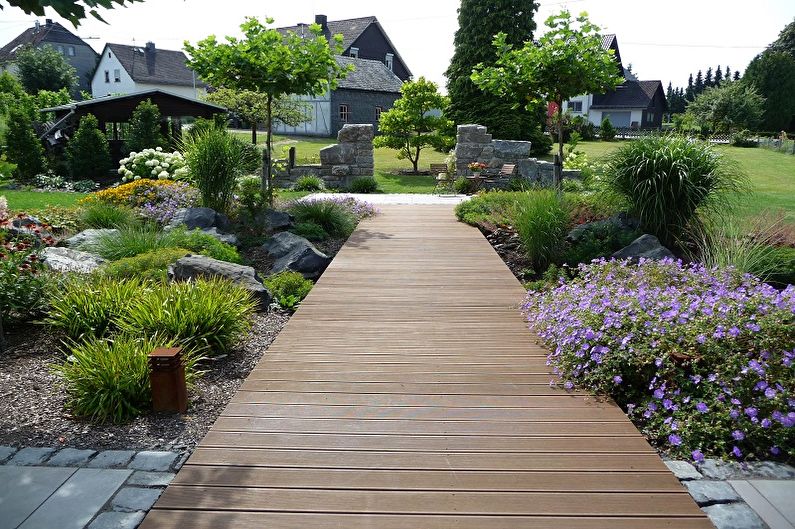
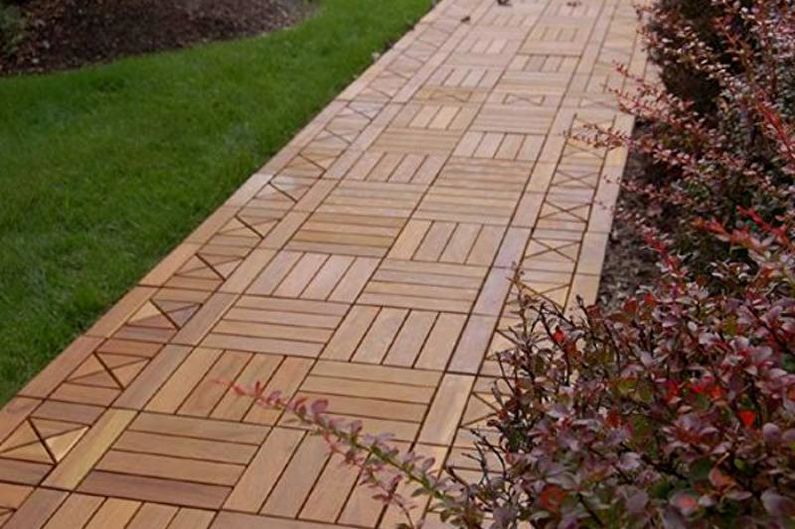




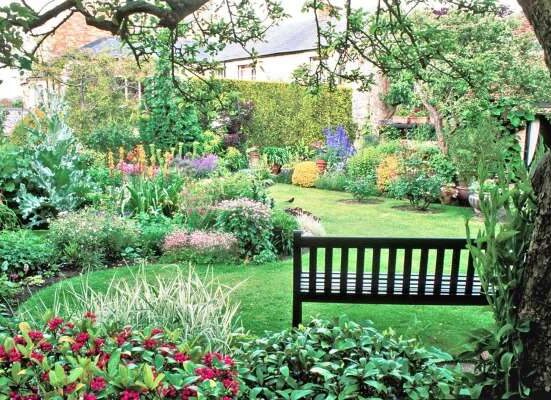

Leave feedback about this